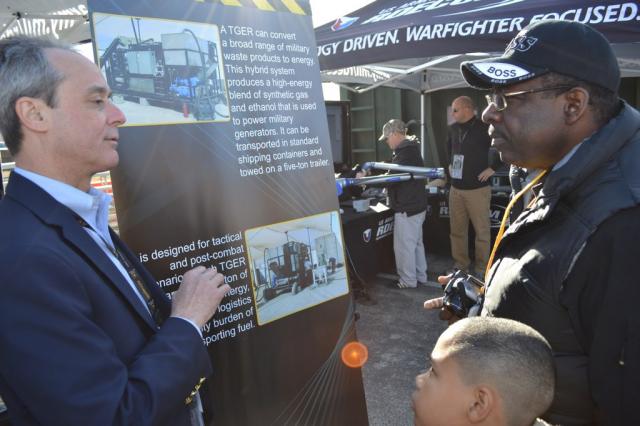SAN ANTONIO: Dr. Emmitt L. Brown, the scientist from the movie “Back to the Future,” had things fairly well devised several years ago, feeding trash to the “flux capacitor” to power his time machine.
The U.S. Army is now furthering its goal to empower, unburden and protect the warfighter by developing “green” technology that converts waste into fuel.
Importing fuel and exporting garbage to and from the battlefield is an expensive and dangerous process for the Army. Doing so requires convoys that put Soldiers in danger and the disposal of the garbage is both an environmental and security issue.
“What you end up with is a public health problem, a public relations problem and a security problem,” said James Valdes, scientific advisor for biotechnology for Edgewood Chemical Biological Center, an element of the U.S. Army Research, Development and Engineering Command.
The Tactical Garbage to Energy Refinery is a hybrid technology that alleviates these burdens by converting a broad spectrum of waste into a usable power source. The TGER metabolizes waste into ethanol and compresses undigested waste into pellets which are then converted into a composite gas. The ethanol, composite gas and a 10 percent diesel drip are injected into a diesel generator that produces electricity.
“A 500-man unit generates about 2,500 pounds of trash per day. We figured if we could convert the trash into power, we could cut down on the need to haul fuel into the operating base and cut down on the need to haul garbage out,” Valdes said.
The TGER has a zero carbon footprint and gives a 30-to-one reduction in the volume of trash. For every 30 cubic yards of trash processed through TGER, one cubic yard of ash is produced.
“We had the ash tested by the Environmental Protection Agency and it was determined that it is a benign soil additive. You could take the ash and use it on your roses,” Valdes explained.
Army scientists and engineers tested TGER at an operating base in Iraq for three months. They wanted to use it in an unforgiving environment to stress the system.
“Any technology works perfect in a laboratory setting. We wanted to test TGER in a harsh environment to see what was going to break. We now know what works on site and we’ve designed it to fit the warfighter’s needs,” said Valdes.
The technology behind the TGER has applications beyond the Army. It potentially could be used as relief for an area hit by natural disaster.
“Often in a natural disaster area the power is out and trash is everywhere. TGER fits in a six-by-six-by-twelve-foot box that can be flown into the area hit by the natural disaster. It could be used to help eliminate trash and produce electricity,” Valdes said.
The ECBC scientist explained the futuristic technology at RDECOM’s Army Tech Zone within the Army Strong Zone at the U.S. Army All-American Bowl this weekend. The Army Tech Zone featured several emerging technologies developed by the Army’s science and technology community.
Secretary of the Army John McHugh visited the Tech Zone and expressed great interest in the TGER.
“We have money for that,” he said, addressing further development of the TGER, as he left the exhibit area.
“It’s rare that a scientist gets to see something he helps develop actually go into the field in an operational situation and see it work. That’s a real nice thing,” Valdes said.










